 |
 |
 |
“Timeless” is a good word for Mushishi, in more ways than one.
Various year-end anime polls like to include a category for “world-building” or some such description, and it’s hard to imagine Mushishi not coming out on top any time it’s eligible to compete. It’s truly remarkable how seamlessly I slipped back onto the reality created by Urushibara Yuuki, Artland and Nagahama Hiroshi – it seems hard to believe almost eight years have passed since the TV anime ended. It’s a strange, captivating, unsettling and singular vision – and returning to it feels as easy and natural as falling into bed at the end of a long day’s work.
By now you’ve likely heard the glorious (and wholly unlikely) news that Mushishi will be returning for a second season this April, backed by most of the same staff. That casts this TV special in an entirely new light – there’s no conflicted feeling in watching Hihamukage because it’s not a farewell, but a welcome back. And it feels very much like the same Mushishi we saw in 2005-6 – while the animation is visibly not quite on the same level (there are some off-model moment and lip-synching issues, and far more CGI than in the original) that’s to be expected given what a gamble bringing back Mushishi is, and that Artland is hardly a heavy-hitter in anime production these days. If that’s the only major change from the original series, I’ll be more than content.
I certainly love Mushishi – I consider it one of the 20 or so best anime ever made as well as one of my favorites (and those are different lists). But I’ve never tried to write about it at length, and it occurs to me in watching this special that it might just be a tough series to blog. It’s one of shows that’s more about the feeling of watching than the plot or even the characters, though both can be memorable. I’ve always in my mind linked this show loosely with Natsume Yuujinchou for their brilliant portrayal of the intersection of the world of humans and spirits – in fact everyone I know who’s a fan of one likes the other – but Mushishi is by far the cooler, more austere series. There’s a certain detachment to Mushishi that’s essential to its magic, even when it deals with highly emotional human problems (which it does almost every episode).
You can’t extoll the merits of Mushishi without singling out Nakano Yuuto for his performance as Ginko, the Mushishi at the heart of the story. He very rarely appears in anime (mostly in Nagahama series when he does) and his voice and delivery are quite unlike the broadly accepted norm for the medium. I adore the Mushishi manga but in my mind I can’t separate Ginko from Nakano-san – they’re one and the same person. Likewise I can’t imagine it without Masuda Toshio’s soundtrack, which is the very essence of music that perfectly expresses the tone and feel of the story – in terms ethereally beautiful, creepy and inspiring. This is the miracle of Mushishi the anime – a marriage of elements that come together in utterly seamless harmony, and in doing so take what’s already a superb manga and make it even better.
Another element of Mushishi that strongly appeals to me is that it almost without fail casts real children as the children who play prominent roles in many of the stories (Adachi Naoto, who played Chagum in Seirei no Moribito, earlier appeared in a Mushishi episode). This is true of the children who appear with Ginko’s friend Adashino-sensei (Ueda Yuuji) at the start of Hihamukage, and it’s true of the twin girls at the center of this story – Hiyori (Watanabe Yuuna) and Hinata (Sasaki Rio). The theme of the episode is a solar eclipse, a time when Mushi historically behave unusually, causing various human ailments. The most serious potential threat is the Hihamu, a mushi whose root cannot be exposed to sunlight but sends out a “core” during an eclipse to bask in the sun’s rays, calling other mushi to it. This effectively causes an eclipse that never ends, causing crops to fail and tempers to fray. Ginko (as he always seems to be) is at the center of the action, the village where the Hihamu appears after the eclipse at the start of the story.
Mushishi is narratively constructed of stand-alone episodes that are linked mostly by Ginko himself, but also with a few other recurring characters. Thematically they’re linked much more closely, though, and the dilemma that presents itself here – the one twin (Hiyori), due to a Mushi-caused illness unable to bear the sunlight, is thrilled at the misfortune that’s befallen her village because now she can venture into the world of her sister. The needs of the many vs. the needs of the few – or the one – is a topic close to the heart of this series. I wouldn’t rank Hihamukage as among the elites of Mushishi’s mini-arcs, but it’s certainly on roughly the same level as most of them. The manga proper finished in 2008 and Urushibara-sensei wrote this as a special for Afternoon magazine, but it doesn’t feel extraneous or disconnected in any way.
That’s fitting for a series like this, which is truly timeless on so many levels. It’s never clear what the time frame of the setting is, for example – it appears to depict a Japan in a pre-industrial age, but Ginko’s clothes are modern (and Western) and he makes use of tools like scalpels and microscopes. It simply exists in its own nebulous timeframe and we don’t question it, because the construction is so natural and absorbing. Mushishi itself seems to exist out of time – it’s a story from the golden age of anime, a period where creativity and risk-taking were commonplace and the medium was approaching its peak of international popularity. On some level it feels as if Mushishi shouldn’t exist now, or at least come off as a relic of a remote and forever-lost era – but the world it depicts allows for no such sensations to linger. Mushishi simply is – and once you open yourself up to it, it’s impossible to resist its spell. Having Mushishi back is a small miracle, and anime is going to be a far richer place for it.
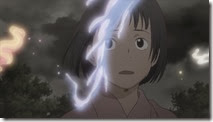 |
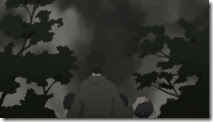 |
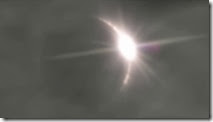 |
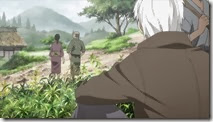 |
 |
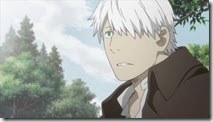 |
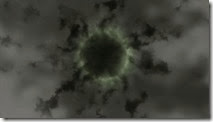 |
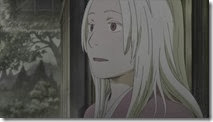 |
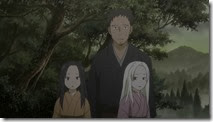 |
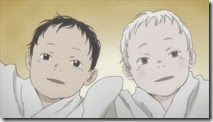 |
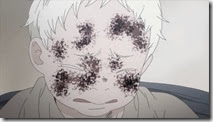 |
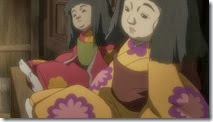 |
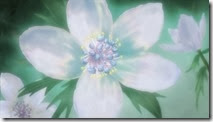 |
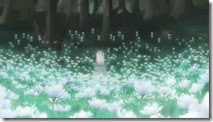 |
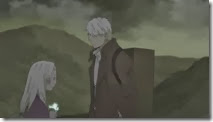 |
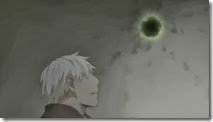 |
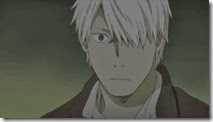 |
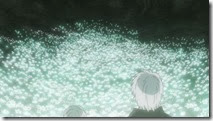 |
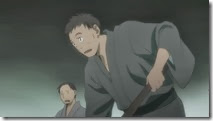 |
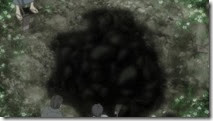 |
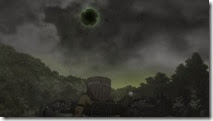 |
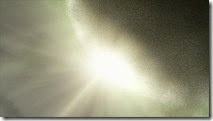 |
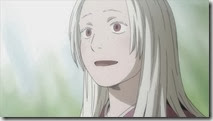 |
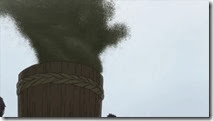 |
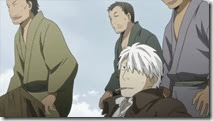 |
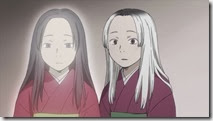 |
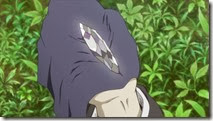 |
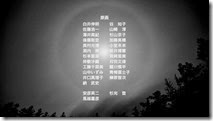 |
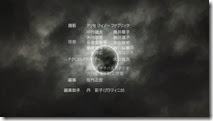 |
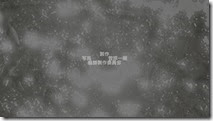 |
 |
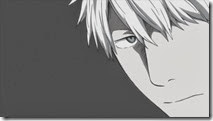 |
 |


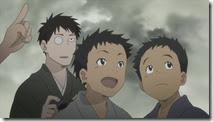
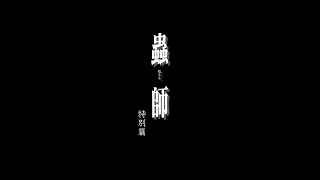
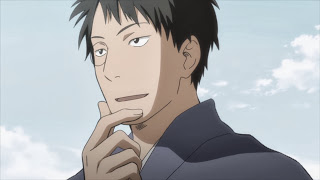

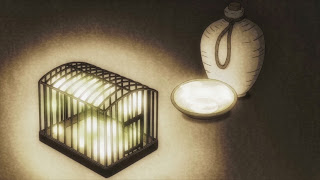
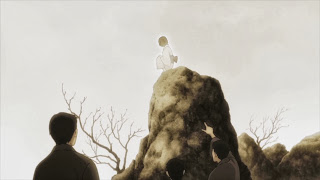
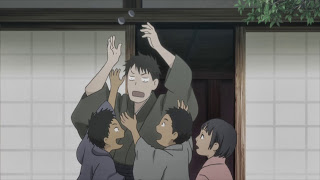
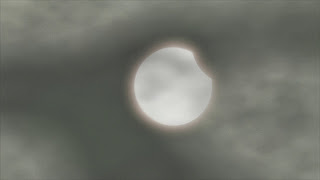


Flower
January 5, 2014 at 2:07 pmVery well written description of what helps to make Mushishi what it is and why it would have the draw it did on so many, manifests again with this ep, and hopefully will continue to do next season.
One of the things I like about the series as well is the odd watercolor'ish style of animation with its subdued tones. The words "cooler and austere" to me apply to the… "temperature" of the world it creates as well as the "minimalist aesthetic" that is always a delight for lovers of that art style to stumble across.
In some ways I am not bothered by the gap of time in between s1 and s2 because for me Mushishi is like a rare and exquisite desert that is made all the more effective because of the fact that it is not meant to be part of the daily staples we consume, but a rare, exotic treat, relished and valued all the more because of its exoticness.
It would be hard for me to name another series that so effectively conveys the invisible world as "other", as something so clearly "not human" as this one. There is no relationship or friendliness here, like in Gingitsune or every once in a while in Yuujinchou, but then there is no outright antagonism or ill will either. The world is just "other", a strange and dangerous place with its own laws that is to be feared and respected, yes, but which also (in an oddly curious and sometimes dangerously fascinating way) has it's "place" in the overall… umm… panorama(?) despite it's alien nature.
Anyway, looking forward to s2 as well. ^^
litho
January 5, 2014 at 3:29 pmThat part when the eclipse occurred – where they showed us a short montage of the characters that came in the first season – made me all warm and fuzzy inside.
tak-kun
January 5, 2014 at 5:37 pmIt's important to note that I believe this special addresses something the rest of the manga never really does: a way to potentially treat Tanyuu's illness. The anime reshuffled stories and ended the original broadcast with the first Tanyuu story; something that provided a powerful foil to Ginko and recast the motivation for his travels. The message was deeply hopeful and I always wished Urushibara-sensei would attempt some sort of resolution to the story.
nc622x
January 5, 2014 at 10:39 pmI'm quite certain the place depicted in Mushishi is not Japan at any actual era. It's just a world of fantasy that closely resembles Japan, like how the world of The Lord of the Rings somehow resembles the western middle age (or the dark ages). That said, it is really fascinating how Ginko's western cloths seamlessly match with the completely Japanese style of the rest of the world. I don't remember any other character wearing suits in the previous season. I once got curious and tried to search in the manga but couldn't spot anyone else wearing a western coat. Or I just missed one or two. OMG, I feel like reading them again but I got work tom.
Sir Christopher McFarlane
January 6, 2014 at 3:00 amI ask myself whether we deserve more Mushi-shi.